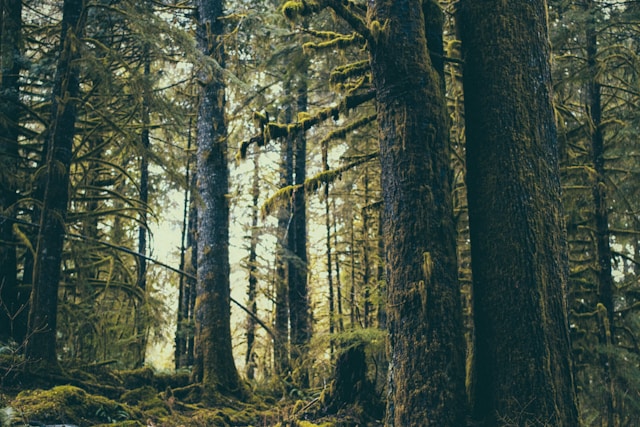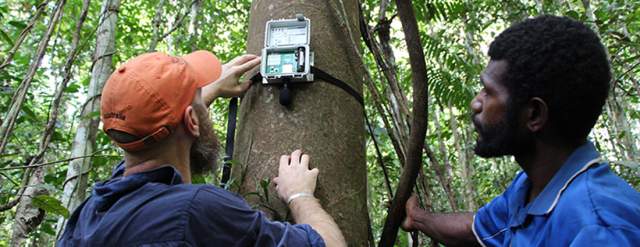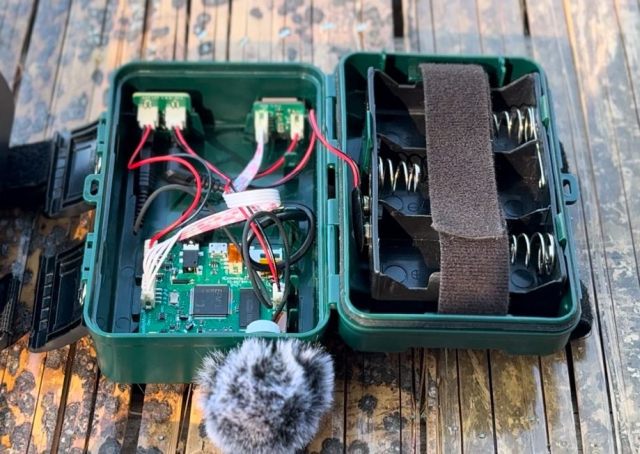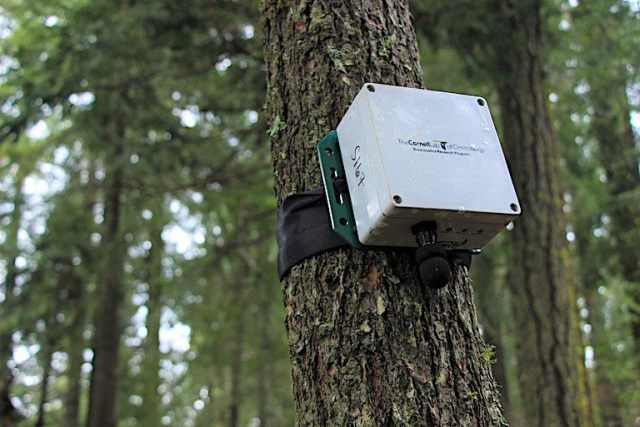Have you ever just been walking through a forest, or maybe sitting by the ocean, and found yourself wondering about all the hidden conversations happening? You know, the chirps, clicks, songs, and rumbles? Turns out, those aren’t just random background noises. Nope, they’re actually part of a super complex language, carrying really important info for the animals making them.

So, what if we could actually tune into these chats to get a better handle on the natural world and figure out how to protect it? Well, guess what? Thanks to this amazing field called bioacoustics, we totally can! Seriously, this tech is like opening up these incredible new windows into animal lives, and it’s changing research in ways we could only have dreamed about just a few decades back. Pretty cool, right?
Okay, So What Exactly is Bioacoustics?
Basically, bioacoustics is the science that digs into how animals make, hear, and use sound. Think of it as a mashup of biology, ecology, physics, and engineering – all focused on the sounds life makes. Researchers use special microphones (or hydrophones if they’re listening underwater) and recording gear to capture animal calls and other important sounds in an ecosystem. Sometimes people call this whole collection of sounds the soundscape.

But just recording isn’t where it ends; the real magic happens when they start doing the animal vocalization analysis. Scientists dig into these recordings to figure out which species are around, understand what they’re doing, keep tabs on populations, and even check the health of the whole environment. It really dives deep into the acoustic ecology of a place – exploring how sound influences how critters interact with each other and their surroundings.
How Bioacoustic Tech Gets Used in Animal Research
Right, so how is bioacoustic technology used in animal research in a practical sense? Well, its uses are incredibly varied. You see, traditionally, studying animals, especially the shy ones or those that only come out at night, meant trying to watch them directly. That can be tough, take ages, and sometimes even disturb the animals you’re trying to study. Bioacoustic monitoring gives us a powerful alternative that doesn’t get in their way.
What researchers do is strategically place acoustic monitoring equipment – basically fancy microphones and recorders – in the habitats they’re interested in. These gadgets can run non-stop for weeks or even months, grabbing sound data 24/7 without bothering the wildlife. This lets scientists:
- Figure out if certain species are present or absent.
- Get an estimate of population sizes and how densely packed they are.
- Keep track of animal behavior patterns (like mating calls, munching sounds, or “get off my lawn” disputes).
- Study how complex their communication is and how they interact socially.
- Follow migration patterns.
- See how environmental changes or human stuff (like noise pollution) affect vocal communication in animals.
Then, they use sophisticated bioacoustic research tools and software to sort through and make sense of the huge piles of data they collect.
The Huge Impact Bioacoustic Monitoring Has on Wildlife Studies
Honestly, the impact of bioacoustic monitoring on wildlife studies is massive. It gets around so many problems that older methods had. I mean, imagine trying to count shy forest birds or bats that only fly at night just by looking for them – it’s incredibly tricky! Bioacoustics makes this totally doable.

- Continuous Data: These devices record day and night, rain or shine. This gives a much fuller picture than humans popping in now and then.
- Monitoring Tough Spots: You can put sensors in dense jungles, deep oceans, or way up high on mountains where it’s hard for people to go.
- Studying Sneaky Species: Animals that usually avoid humans or are only active when we’re asleep can be detected and studied just by listening to their sounds.
- Understanding Behavior: Analyzing call patterns tells us so much about things like mating rituals, how they raise their young, social setups, and how they react to danger.
- Quick Biodiversity Checks: By picking out the calls of lots of different species in one area, bioacoustics gives a fast and efficient way to see how diverse the life is there. This really shows how does bioacoustic monitoring contribute to biodiversity assessments.
These advantages of bioacoustic sensors in ecological research mean we gather way more complete data, which helps us make smarter decisions about conservation. It’s a real game-changer for understanding the complex web of life out there.
Listening In Everywhere: Applications Across Different Fields
The cool thing about bioacoustics is how versatile it is – it’s popping up in all sorts of biological studies.

- Ornithology (Bird Stuff): Birds are super chatty, making them perfect subjects. There are tons of examples of bioacoustic technology applications in ornithology. Think identifying species by their unique songs, monitoring when they’re breeding, tracking migrations by recording calls they make while flying, and seeing how habitat changes affect bird communities. Plus, the software that automatically recognizes bird songs is getting seriously good.
- Marine Biology: The underwater world? Yeah, it’s buzzing with sound. Bioacoustics for studying marine animal communication uses hydrophones to eavesdrop on whale songs (which they use to talk across huge distances!), dolphin clicks (for finding their way around and chatting), and even the noises fish and tiny invertebrates make. This helps researchers get a handle on social structures, track movements, check on population health, and study the negative effects of ship noise and sonar. Analyzing these sonic environment studies is super important for protecting marine life.
- Land Mammals and Other Critters: From the ultrasonic calls bats use to navigate and hunt, to the complex chatter of primates, or even the calls of frogs and insects that tell us about ecosystem health – wildlife acoustics helps us study them all. Ecoacoustics, which is the bigger picture study of all sounds in an ecosystem (biological, geological, human-made), helps paint a really complete picture of how healthy the environment is.
Real-World Wins: Some Cool Case Studies
You know the saying, “the proof is in the pudding”? Well, there are plenty of case studies of bioacoustics aiding species conservation that show just how powerful this is.
- For example, researchers have used acoustic monitoring deep in rainforests to find populations of rare or endangered frogs they didn’t even know were there, just by identifying their unique calls. This led straight to efforts to protect those specific spots.
- Over in Africa and Asia, acoustic sensors are part of the toolkit for fighting poaching. These systems can automatically pick up sounds like gunshots or chainsaws and alert rangers almost instantly. Sometimes they can even identify specific animal distress calls. How amazing is that?
- Monitoring the critically endangered North Atlantic right whales? That heavily relies on networks of acoustic buoys that listen for their calls. When they hear them, authorities can quickly tell ships to slow down in that area, reducing the awful risk of collisions.
The Gear They Use: Bioacoustic Research Tools and Software
Doing good bioacoustics research means having the right kit and knowing how to analyze the data.

- Hardware: This includes different kinds of microphones, hydrophones (for underwater listening), and autonomous recording units (ARUs) or passive acoustic monitors (PAMs) – basically recorders you can leave out in the wild. Advancements in bioacoustic equipment for field researchers are always making these devices smaller, better on battery life, and able to record for longer stretches.
- Software: Okay, so you’ve got potentially terabytes of sound data. Analyzing all that needs powerful software. Spectrograms, which are like visual charts of sound, are a basic but essential tool. But more and more, artificial intelligence (AI) and machine learning are stepping in to automatically identify species and spot patterns. This really helps researchers cope with the sheer amount of data. Having solid bioacoustic data analysis methods and practices is key to getting useful info out of it all.
Future Sounds: What’s Coming Next?
The world of bioacoustics is moving fast. Some key trends in bioacoustic technology for animal behavior studies to watch out for include:
- Going Tiny: Smaller, lighter sensors mean they could potentially be put on animals (carefully, of course!) or flown around on drones.
- Smarter AI: Machine learning is becoming crucial for chewing through massive datasets quickly and accurately.
- Real-Time Action: Imagine systems that analyze sounds and send alerts instantly – like those whale or anti-poaching examples, but even faster for quicker conservation action.
- Mixing It Up: Combining sound data with other info like camera trap images, GPS tags, and environmental readings (like temperature) to get a much richer understanding.
- Cloud Power: Using cloud computing makes it easier to store, process, and share huge acoustic datasets among scientists worldwide, which really helps with collaborative projects using bioacoustic technology for animal studies.
Hearing the Hurdles: Challenges Still Exist
Now, even with all its power, bioacoustics isn’t perfect. There are definitely some limitations and challenges of bioacoustic technology in fieldwork:

- Data Overload: Seriously, the amount of data collected can be overwhelming to store, let alone analyze.
- Background Noise: Trying to pick out a faint animal call from wind, rain, or human noise (like cars or planes) can be really tough.
- ID Mistakes: Automated systems can sometimes get it wrong and misidentify species, especially if their calls sound similar. Often, a human still needs to double-check.
- Cost & Upkeep: Good equipment costs money (though it’s getting cheaper!), and keeping devices running in rough environments is a challenge – think battery life, weatherproofing, or even animals chewing on them!
- Making Sense of It All: Just because you hear a sound doesn’t always mean you know exactly what behavior it relates to. Interpretation takes work.
Want to Tune In? How You Can Get Involved
Does listening to nature’s symphony sound fascinating? If so, there are ways you can actually get involved!
- Learning: Lots of universities now offer courses or parts of courses in bioacoustics or acoustic ecology within biology, ecology, or bioacoustics in environmental science degrees. Keep an eye out for educational programs focusing on bioacoustic research techniques.
- Citizen Science: There are quite a few cool projects where regular folks like you and me can help classify sounds recorded in the wild using online tools. It’s a fantastic way to contribute directly to real research from your own home.
- Funding & Teamwork: For researchers out there, plenty of funding opportunities for bioacoustic research in wildlife conservation come from government bodies and private foundations. And honestly, teamwork makes the dream work in this field.
The Sound Future of Wildlife Research (See what I did there?)
Bioacoustics is fundamentally changing how we watch and understand the animal kingdom. By tuning into the sonic environment studies of our planet, we’re getting insights into behavior, ecology, and biodiversity like never before. It gives us this powerful, non-invasive way to monitor wildlife all the time, study those hard-to-find species, check the health of ecosystems, and come up with conservation plans that actually work better.
Sure, there are still hurdles to overcome, but the rapid advancements in bioacoustic equipment for field researchers and the smart new ways to analyze data promise an even more exciting future. It’s about so much more than just listening, isn’t it? It’s about really understanding the incredible conversations of life all around us and using that knowledge to protect the amazing biodiversity of our planet. Makes you wonder, what sounds of nature out there still hold secrets just waiting to be discovered?
